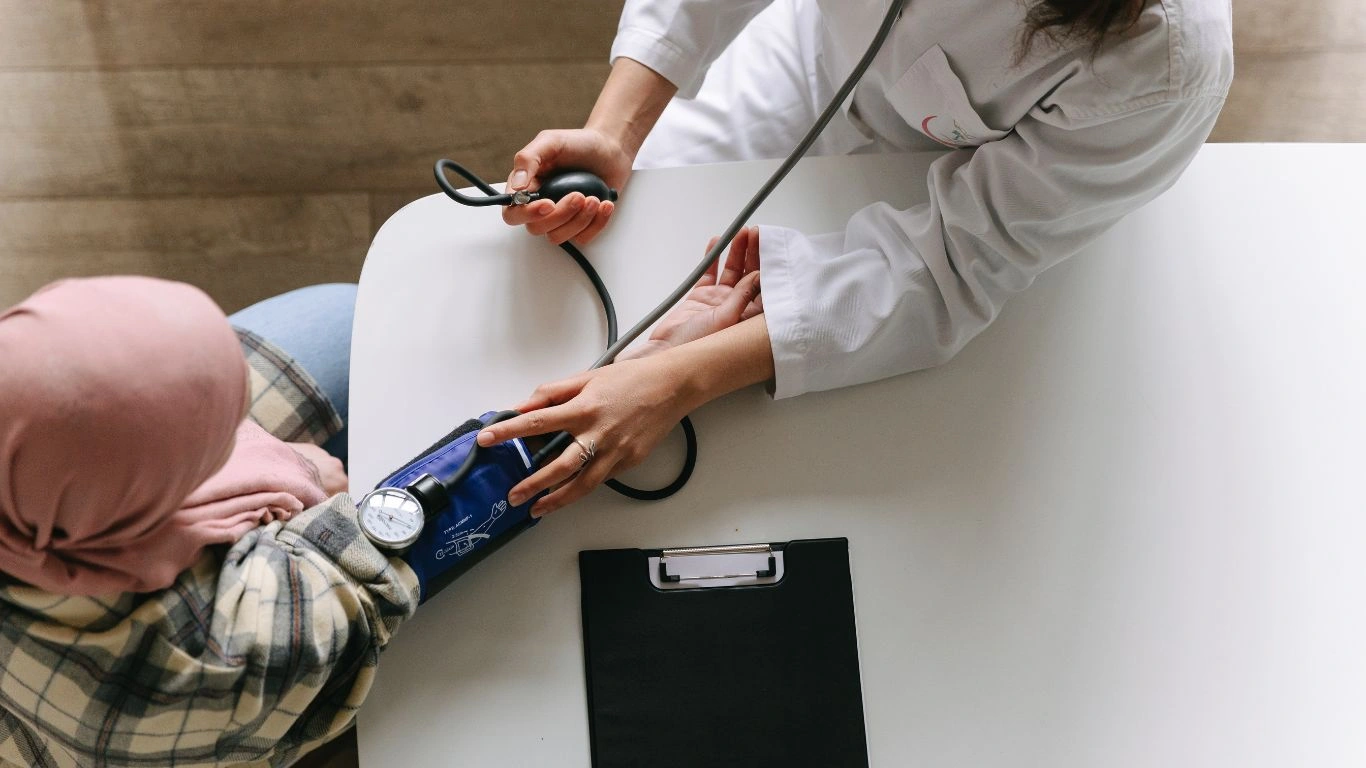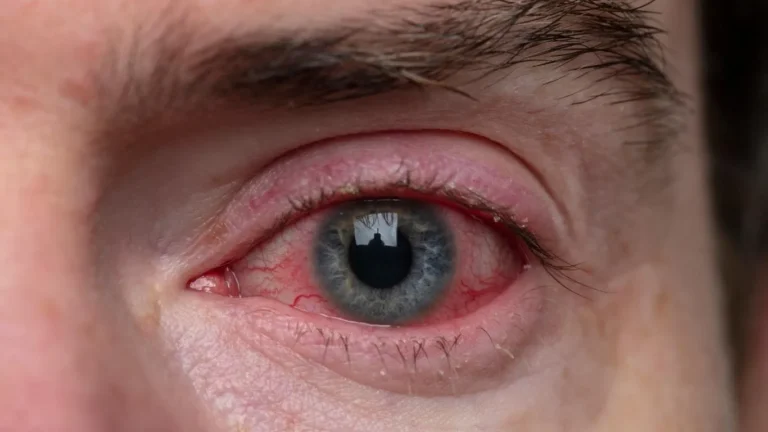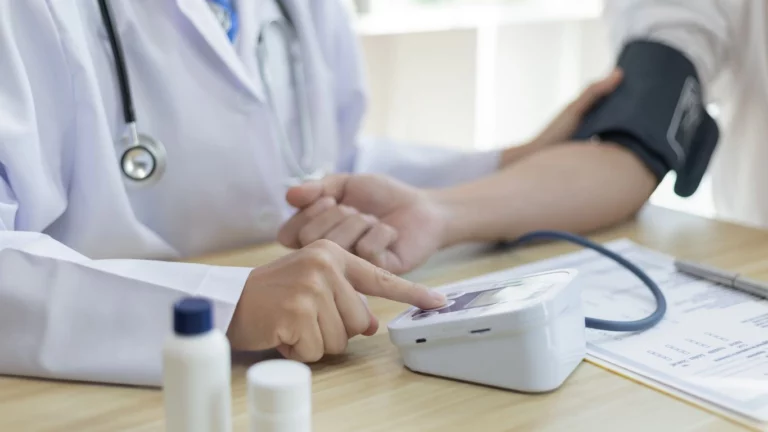High Blood Pressure and Fluid Retention: The Hidden Danger Exposed
If you’ve ever felt like your body’s holding onto water like it’s prepping for a drought—and your blood pressure is riding high on top of that—you’re not alone. As someone who’s spent years managing hypertension in my internal medicine practice, I’ve seen how tightly high blood pressure and fluid retention are intertwined. It’s not just a coincidence. There’s a physiological back-and-forth happening beneath the surface, and if you’ve ever felt bloated, puffed up, or noticed your ankles turning into little water balloons, your body might be waving a red flag. Let’s dive into what’s really going on—and more importantly, what you can do about it.
Why Do High Blood Pressure and Fluid Retention Often Show Up Together?

Let’s start with the basics. Blood pressure is the force your blood exerts on the walls of your arteries. When it’s too high for too long, the vessels start to wear down. But what many people don’t realize is that fluid retention isn’t just a symptom—it can also be a contributor to the problem.
The Role of the Kidneys
Here’s where things get real interesting from a clinical perspective. Your kidneys are like the ultimate filtration system. When they’re working right, they remove extra sodium and water from your body. But in people with high blood pressure, this system often gets compromised. The blood vessels in the kidneys stiffen or narrow, making it harder for them to do their job. That means fluid starts to build up, and—you guessed it—your blood pressure goes even higher.
In my own clinic, I’ve seen patients come in with mild hypertension that suddenly spikes after a few days of salty meals and poor hydration. Once the fluid starts backing up, it’s like a loop of dysfunction: retention raises pressure, and pressure worsens retention.
The Salt Connection
We can’t talk about fluid retention without calling out sodium. It’s not evil, but it’s definitely sneaky. Sodium pulls water into your bloodstream. When you eat too much salt, your body hangs onto more water to dilute it, which increases the volume of blood—and that means more pressure on those vessel walls.
- Processed foods are one of the biggest culprits. Think soups, frozen meals, deli meats.
- Even so-called “healthy” options like cottage cheese or whole grain bread can hide a lot of sodium.
- One of my patients was shocked to learn that her favorite “light” soy sauce had more salt than the regular kind. Labels can be misleading.
How to Recognize Fluid Retention (It’s Not Always Obvious)

You might assume that if you’re not visibly swollen, you’re in the clear. But I’ve had patients with high blood pressure and subtle fluid retention that was causing a lot of internal stress—and they didn’t even realize it. So how can you tell?
- Swollen ankles or feet: Classic sign, especially toward the end of the day.
- Puffy face or eyelids: This one tends to show up in the morning.
- Rapid weight gain: If you’re up more than 2–3 pounds in a day or two, that’s likely water, not fat.
- Shortness of breath: Fluid can sometimes accumulate around the lungs (a big red flag).
- Frequent or urgent urination changes: Could be your kidneys working overtime—or failing to keep up.
In my experience, one of the most overlooked signs is a sudden increase in how snug your rings or shoes feel. I’ve had folks mention, “I thought I was just tired,” but it turned out to be fluid creeping in.
What’s Actually Happening Inside Your Body?

It’s not just about water in the tissues. When you retain fluid, the entire vascular system feels the strain. Think of your blood vessels like a garden hose. The more fluid that gets pushed through, the more pressure you need to move it—especially if that hose has narrowed over time from high blood pressure.
The Hormonal Link: RAAS System in Action
There’s a hormonal orchestra behind the scenes—particularly the renin-angiotensin-aldosterone system (RAAS). It’s your body’s way of regulating blood pressure and fluid balance. But in people with chronic hypertension, this system can become overactive, leading to:
- Increased sodium reabsorption (hello, water retention)
- Vasoconstriction (narrower vessels = higher pressure)
- More aldosterone production, which tells your kidneys to hold onto even more fluid
And yes, I know that sounds a bit textbook, but in the real world, I’ve seen how treating this system directly—like with ACE inhibitors or aldosterone blockers—can make a world of difference. For some of my patients, it’s the difference between feeling bloated and breathless versus feeling like themselves again.
When Fluid Retention Becomes Dangerous
Mild swelling is annoying. But when fluid builds up too much, it can put pressure on vital organs—especially the heart. If the heart has to pump against that extra volume constantly, it can start to weaken. That’s when we move into heart failure territory. And for anyone reading this who’s managing both hypertension and swelling? Please don’t ignore it. I’ve seen it sneak up fast, especially in older adults.
How High Blood Pressure Medications Can Help Manage Fluid Retention

So, you’ve got high blood pressure and fluid retention—now what? Well, first off, don’t panic. There are effective treatments available, and managing both at once is totally doable. As an internal medicine physician, I’ve helped countless patients navigate this tricky combination. It’s about finding the right balance with your medications. Here’s a breakdown of what to expect and what works.
Diuretics: The Water Pills
One of the first medications I’ll often prescribe for someone experiencing fluid retention is a diuretic, commonly known as a “water pill.” These medications work by helping your kidneys get rid of extra sodium and water, which reduces the overall volume of fluid in your body. I can’t tell you how many times a patient walks into my office, swollen and uncomfortable, and we make a simple adjustment with a diuretic to get things under control.
But here’s the catch—while they’re fantastic for reducing fluid, diuretics can sometimes lower your blood pressure too much. This is a balancing act, especially if your blood pressure is already on the lower side. As a result, I always monitor my patients closely when introducing diuretics, making sure they’re not getting too light-headed or dizzy.
- Thiazide diuretics (like hydrochlorothiazide) are commonly prescribed.
- Loop diuretics (like furosemide) are used in more severe cases.
- Potassium-sparing diuretics (like spironolactone) help prevent potassium loss, which can be a concern with other types.
Remember, diuretics are typically part of a larger treatment plan, not a one-size-fits-all solution. That’s why I always encourage patients to track their symptoms and check in regularly to ensure everything is on track.
ACE Inhibitors and ARBs: Protecting Your Kidneys and Blood Vessels
Now, let’s talk about two of my favorite classes of medications for high blood pressure: ACE inhibitors and angiotensin II receptor blockers (ARBs). These work wonders by blocking the effects of a hormone called angiotensin II, which constricts blood vessels and raises blood pressure. By relaxing those blood vessels, these meds can lower your blood pressure and—bonus—help reduce fluid retention.
For many of my patients with both hypertension and fluid retention, an ACE inhibitor like lisinopril or an ARB like losartan makes a huge difference. In addition to reducing swelling, they help protect the kidneys from the damage that high blood pressure can cause over time.
What’s great about ACE inhibitors and ARBs is that they’re relatively easy to tolerate, with minimal side effects for most people. I’ve had patients tell me they feel “less bloated” and have more energy after switching to one of these medications. That’s always a win in my book!
How Lifestyle Adjustments Can Help Relieve Fluid Retention

Of course, medication isn’t the only way to get a handle on fluid retention. In fact, lifestyle adjustments play a huge role in managing both high blood pressure and fluid buildup. Let’s dive into some of the non-medication changes I often recommend to my patients.
Reduce Sodium Intake
If there’s one thing I always tell my patients, it’s this: cutting back on sodium can make a massive difference. This doesn’t mean you have to give up flavor (thank goodness), but it does mean being more mindful of where that sodium is hiding. I’ve had patients tell me they’re “eating healthy,” but still consuming way too much sodium in things like salad dressings, condiments, and even smoothies!
- Start by avoiding processed foods. Pre-packaged meals are usually packed with salt.
- Cook fresh whenever possible. It’s easier to control the amount of salt in your meals.
- Read labels. You’d be shocked at how much sodium is in foods you think are healthy.
Cutting back on sodium can significantly reduce the amount of fluid your body retains. I’ve had patients report feeling less puffy and more comfortable within just a few days of lowering their sodium intake.
Exercise Regularly
Exercise is another powerful tool in the fight against high blood pressure and fluid retention. Regular physical activity helps improve circulation, which in turn can reduce swelling. Plus, it helps your body get rid of excess fluid through sweating.
Now, I get it—sometimes the last thing you want to do when you’re feeling bloated or dealing with high blood pressure is hit the gym. But even just a brisk 30-minute walk can do wonders. One of my patients was always skeptical about exercise because of her high blood pressure, but once we got her started with regular walking, her blood pressure started to drop, and her swelling went down too.
Elevate Your Feet
If you’re dealing with swollen ankles or feet, elevating your legs can make a big difference. This helps fluid drain away from the lower extremities and back toward your upper body. I often suggest that my patients do this while watching TV or reading a book. It’s an easy, non-invasive way to help your body get rid of excess fluid.
For those working long hours on their feet, elevating the feet whenever possible can help keep the swelling from getting worse. Simple adjustments like this go a long way in managing fluid retention over time.
When to Seek Medical Help

Lastly, I always tell my patients to be proactive. If you notice signs of fluid retention—like swollen ankles, puffiness in your face, or rapid weight gain—it’s time to reach out to your healthcare provider. Don’t wait for things to get worse or for your blood pressure to spiral out of control.
In some cases, fluid retention can signal more serious complications, like heart or kidney disease. If you’re feeling short of breath, experiencing persistent swelling, or if your blood pressure is consistently elevated despite lifestyle changes, it’s crucial to get checked out. As a physician, I always want to catch these things early before they become bigger issues down the road.
What You Need to Know About Long-Term Management

Managing high blood pressure and fluid retention isn’t a one-time fix—it’s a long-term commitment. As someone who has worked with many patients over the years, I can tell you that consistency is key. There’s no magic pill that can completely resolve these issues overnight, but with the right lifestyle changes and medication, you can regain control of your health.
In my practice, I see two kinds of patients: those who are proactive and those who wait until things have really escalated. The proactive ones are always in a better place because they don’t let their blood pressure or fluid retention go unchecked for too long. If you’re reading this and starting to think about your own health habits, it’s not too late to take action. Let’s dive into a few strategies that can help you stay on top of things in the long run.
Continuous Monitoring: The Key to Catching Issues Early
When it comes to high blood pressure and fluid retention, monitoring is essential. You’ve probably heard the saying “what gets measured, gets managed,” and it’s true. Keeping track of your blood pressure regularly can help you spot any trends or sudden changes that may require immediate attention.
As part of my own personal routine, I recommend my patients invest in a reliable home blood pressure monitor. It’s not just for checking once in a while; it’s about creating a habit of monitoring your health. In fact, I have a few patients who track their blood pressure and weight daily—especially if they’re dealing with swelling—so they can catch fluid retention early.
- Measure your blood pressure at the same time every day. I recommend morning before you get up and evening before bed.
- Record your readings. Many monitors now come with apps that store the data for you. You can easily share this with your doctor.
- Keep an eye on weight fluctuations. Even slight changes can indicate fluid retention.
Don’t rely solely on office visits for your health data. Monitoring at home helps you stay ahead of potential problems, and it can be empowering to track progress over time. Plus, you can bring this data to your doctor, which can be very helpful in adjusting your treatment plan.
Staying On Track With Medication
Taking medication regularly is another big part of managing high blood pressure and fluid retention. I can’t tell you how many times I’ve seen patients who start strong with their meds and then fall off track when they feel better. It’s a classic scenario—everything seems fine, so they think they don’t need their meds anymore. But high blood pressure and fluid retention don’t work like that. They sneak up on you.
For this reason, it’s crucial to stick to your prescribed regimen, even if you’re feeling great. I’ve worked with patients who’ve come back a few months after stopping their medication, only to find that their blood pressure has spiked again. It’s a reminder that managing hypertension is about long-term consistency. I always remind my patients that “we treat hypertension, not just high readings,” because even normal readings don’t necessarily mean you’re free from risks.
If you’re finding it difficult to remember to take your medication, here are a few tricks that might help:
- Set a daily reminder: Use your phone or a pill box with a built-in alarm.
- Pair it with another routine: Take your medication at the same time as something you do daily—like brushing your teeth.
- Get support: If you live with family or a partner, have them remind you or help you stay on track.
And don’t hesitate to talk to your doctor if you experience side effects or if you’re concerned about how your medications are affecting you. There are plenty of alternatives if one med doesn’t agree with you.
Dietary Tips for Managing High Blood Pressure and Fluid Retention

Let’s talk about food. I’ve said it before, and I’ll say it again: the way we eat plays a huge role in managing both high blood pressure and fluid retention. It’s not just about reducing sodium—it’s also about eating the right foods that support your cardiovascular health, kidney function, and overall well-being.
Foods to Embrace
First, the good news: you don’t have to deprive yourself of flavor to eat well for your heart and kidneys. Here are some foods I recommend to my patients looking to keep both their blood pressure and fluid levels in check:
- Leafy greens: Spinach, kale, and other greens are packed with potassium, which helps balance out the effects of sodium.
- Whole grains: Oats, brown rice, and quinoa are great sources of fiber and help with digestion.
- Berries: Blueberries, strawberries, and raspberries are full of antioxidants and great for heart health.
- Fatty fish: Salmon, mackerel, and sardines provide healthy omega-3 fatty acids, which can help lower blood pressure.
- Nuts and seeds: Almonds, walnuts, and chia seeds are packed with heart-healthy fats and fiber.
These foods can help reduce inflammation and keep your blood vessels in top condition. I often tell my patients to think of their plates as an opportunity to “feed” their heart and kidneys. Eating more plant-based foods and good fats can go a long way toward reducing your risks of high blood pressure and fluid retention.
Foods to Limit
On the flip side, there are foods that can make things worse. Some foods can elevate blood pressure, trigger inflammation, or lead to more fluid buildup. While it’s okay to indulge once in a while, these are the foods I suggest limiting or avoiding:
- Salty snacks: Chips, pretzels, and other processed snacks are notorious for their high sodium content.
- Processed meats: Bacon, sausages, and deli meats are often packed with both salt and unhealthy fats.
- Fast food: Burgers, fries, and other fast food options are typically loaded with sodium, unhealthy fats, and empty calories.
If you’re struggling with fluid retention, you might want to skip the salty foods, as they will only make matters worse.
References
- Health.com – Trusted Health Information
- National Institutes of Health (NIH)
- Centers for Disease Control and Prevention (CDC)
Disclaimer
The information provided in this article is for informational purposes only and is not intended as medical advice. Always consult with your healthcare provider before making any changes to your diet, medication, or lifestyle. Every individual’s health needs are unique, and your doctor can provide personalized guidance based on your specific situation.

Dr. Gwenna Aazee is a board-certified Internal Medicine Physician with a special focus on hypertension management, chronic disease prevention, and patient education. With years of experience in both clinical practice and medical writing, she’s passionate about turning evidence-based medicine into accessible, actionable advice. Through her work at Healthusias.com, Dr. Aazee empowers readers to take charge of their health with confidence and clarity. Off the clock, she enjoys deep dives into nutrition research, long walks with her rescue pup, and simplifying medical jargon one article at a time.






